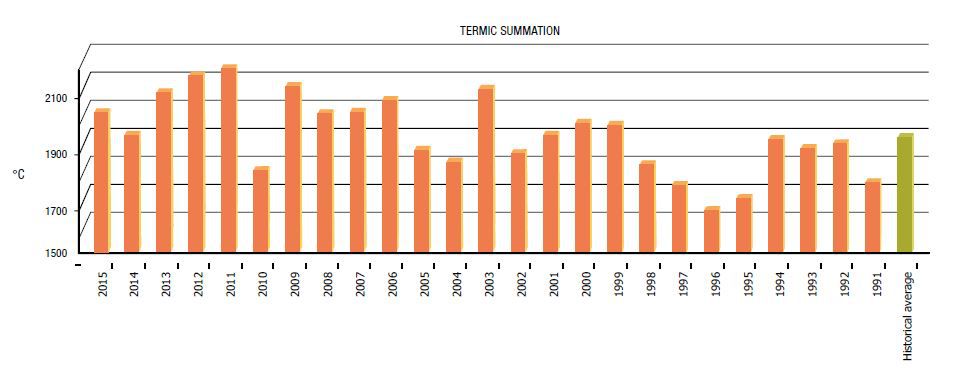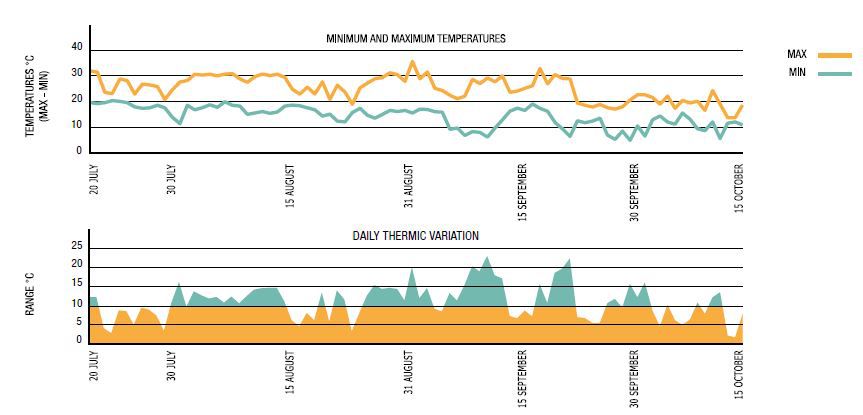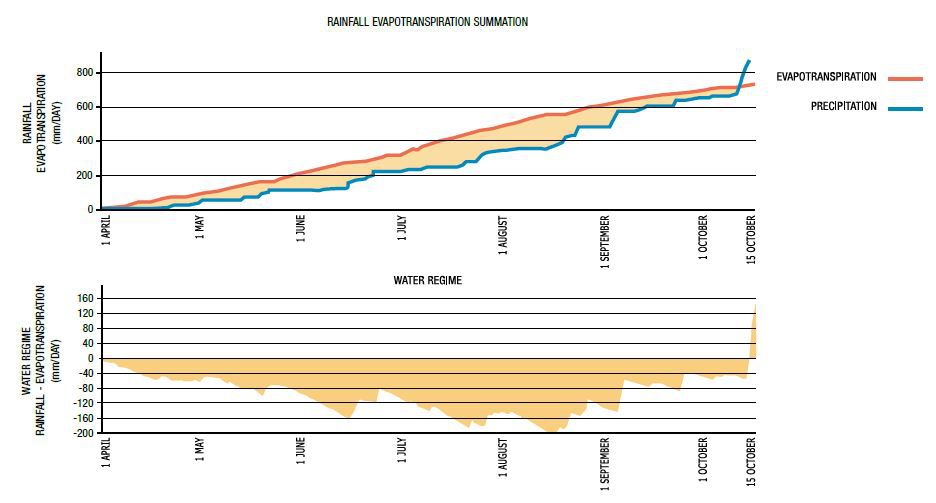VINTAGES
VINTAGE 2015
2015 GROWING YEAR
The 2015 growing season was marked by significantly stable conditions, which encouraged vine development through all the growth stages. True, September saw some rains, but they did not compromise the soundness of the fruit, which was already in an advanced stage of ripeness. Crop load was on the average, and quality components were quite well balanced, with impressively-expressive aromatics in fine equilibrium with tangy acidities.
WEATHER CONDITIONS
The season started out with a budbreak that reflected historical patterns, with April fairly dry and with low temperatures for that period. May saw a significant change in temperatures, but still low rainfall, which led to a normal flowering at months’ end, and a consequent very favourable fruit-set. During June and July, consistently stable weather, punctuated by brief rains, continued to favour vine growth and development. There were, however, several heat spikes in the latter third of July, which rose as high as 39°C, slowing development. Veraison began on 20 July for early-ripening varieties, such as pinot grigio and sauvignon blanc, and concluded with the late-ripeners around 20 August. High heat levels in August provided ideal ripening conditions, so that the grapes looked ready to pick in the first days of September. The rains that fell in September were heavy, but relatively infrequent—only seven days--, so there were no negative impacts on grape health, also because ripeness was already well advanced.
GROUNDWATER CONDITIONS IN THE VINEYARDS
In 2015, the soils enjoyed good groundwater reserves, with a tendency to stress as the growing cycle progressed. This optimal development led to ideal concentration in the grapes by late August, conditions that gradually became less favourable with the advent of some intense rainstorms.
VITICULTURAL CONSIDERATIONS
Weather conditions in 2015 were of particular importance, especially for their impact on the grapes’ metabolic and accumulation processes related to fruit ripening. The rains, which alternated with warm temperatures, ensured optimal water availability to the vines, with brief periods of water stress, which was in fact favourable to the development of aromatic compounds and pigments.
Consistent vine development made possible an equally consistent ripening of the grapes, which were harvested during the classic window of September. Moderate daytime and crisp nighttime temperatures made for a textbook harvest of sound grapes with well-ripened aromatics. Some varieties, however, stood out for their physical and aromatic ripeness, particularly sauvignon blanc, chardonnay, and pinot grigio. Overall, all the white grape varieties reached sugar levels that were in perfect synch with acidities.
The situation was different with Merlot. Weather conditions in September, particularly low temperatures, forced us, at several times, to remove clusters that were slow in ripening.
We will remember this vintage as one of remarkable balance, without high alcohol levels, and with no particular vineyard management problems. The wines, right from their youth, are exhibiting superb varietal character and notable potential for longevity.




